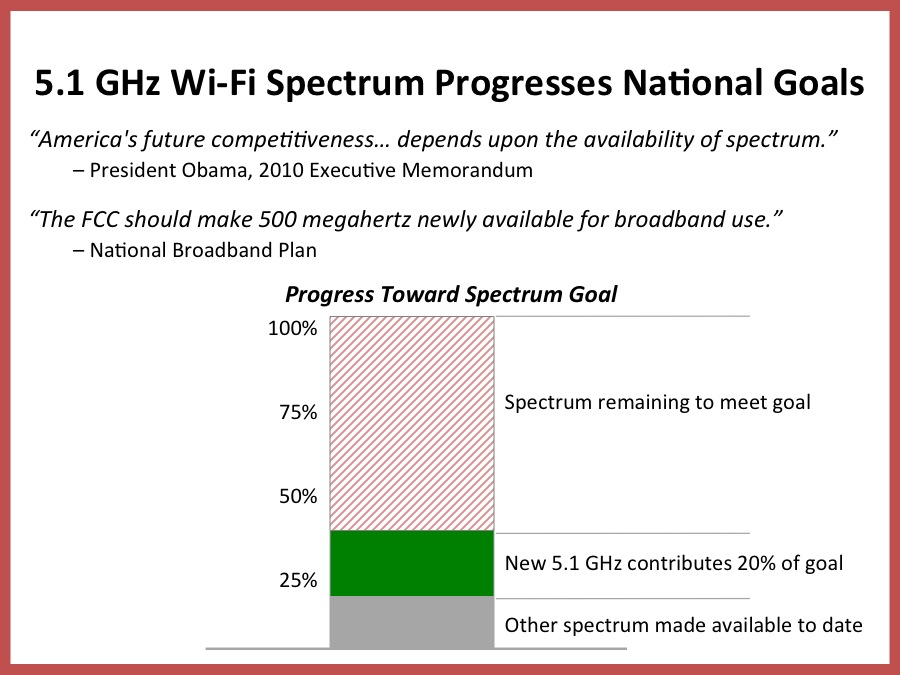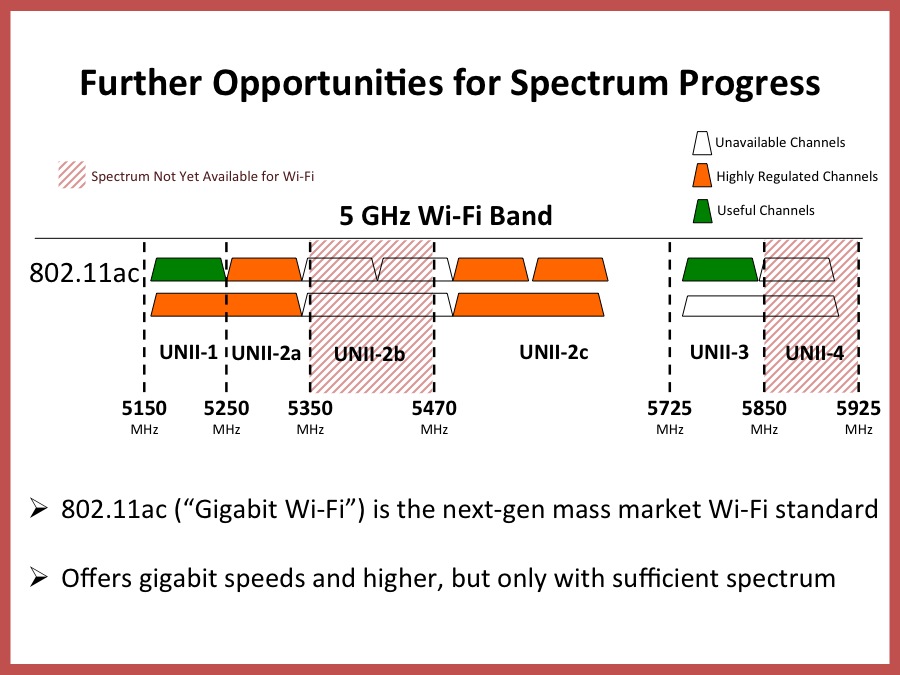Policy
Approaches to Increasing Wireless Spectrum

At the 2014 Cable Show, one of the hottest topics was Wi-Fi. It doesn’t take long to realize how important access to this suddenly precious resource really is: Studies indicate that the number of wirelessly connected devices will triple by 2020, to a mind-blowing 30 billion devices.
[Related: Wireless Spectrum Infographic]
And with each new device that connects, less space is available in the wireless spectrum. The FCC recently voted to increase usable wireless spectrum in the 5GHz band, but this is a small fraction of what will be needed to support the growing wireless culture.

How do we get to a point where there is plenty of spectrum for everyone? There are multiple approaches.
Reallocating Spectrum
Historically, the government has sought to meet new wireless needs by reallocating spectrum from one service to another. The idea has generally been that each service needs its own exclusive spectrum in order to avoid interference, and as technology changes the FCC needs to shuffle the spectrum portfolio.
For those that can remember all the way back to 2009, the digital television transition was an example of this – the FCC recaptured some spectrum used for TV broadcasts and repurposed it for wireless broadband. Believe it or not, this process started about 15 years earlier – so reallocation takes time. Not exactly ideal in a world where technology seems to evolve daily.
The FCC already sees new opportunities for further reallocation of TV spectrum to broadband – but hopes to speed it up this time by creating a new two-sided market for spectrum. In essence, they will buy spectrum back from broadcasters in order to put it in the hands of our smartphones and tablets.
The FCC hopes a one-time-only auction will incentivize broadcasters to relinquish licensed spectrum in exchange for presumably very large sums. They get cash in their pocket for giving up space that was under-used, more wireless spectrum is available, and everybody’s happy – right?
Possibly. There are a lot of unknowns at this point. Some questions were answered at the May 15 meeting of the FCC, but not everyone can be happy all of the time. Hopefully things will move faster than the last 15-year process, even if keeping up with wireless growth is a near-impossible task.
Sharing Spectrum
Another approach to meeting wireless demand is to open up new spectrum by sharing it among many services, rather than shifting spectrum from one service to another. This is possible because wireless technology has come a long way. Wi-Fi is a great example – it is a fundamentally “polite” technology, since it listens to the airwaves before it transmits. It was built to share.
Without the need to shift services from one band of spectrum to another, spectrum sharing lends a greater ability to keep up with wireless growth. And since a lot of that growth is occurring over Wi-Fi, that’s a real opportunity. The FCC’s action in March to expand Wi-Fi access to part of the 5 gigahertz (GHz) band is a case in point. And there’s more that can be done in 5 GHz, and in other bands like 3.5 GHz.
But the value of spectrum sharing depends on the specifics. We still need to protect against interference, but we also need to be sure that we’re not overly protective and discourage productive use of the spectrum. We don’t want Wi-Fi jamming military naval radars, for example, but neither do we want Wi-Fi to be confined to Kansas. (No offense to Kansas.)
It’s a balance. And CableLabs is doing the R&D to ensure that the right balance is struck.
Increasing Wi-Fi Spectrum: A Roadmap
Ultimately, it will take a combination of approaches to achieve the national goal of wireless spectrum growth.

When CableLabs helped the FCC with research to increase the 5GHz band, there was a concerted effort around interference issues. This collaborative research will serve as the technology roadmap for interference issues surrounding both reallocation and sharing of Wi-Fi spectrum. It’s critical that spectrum policy moves forward quickly and effectively to benefit everyone who uses it – and that’s all of us.
Rob Alderfer is a Principal Strategic Analyst for CableLabs, where he guides technology policy and strategy across the industry.

